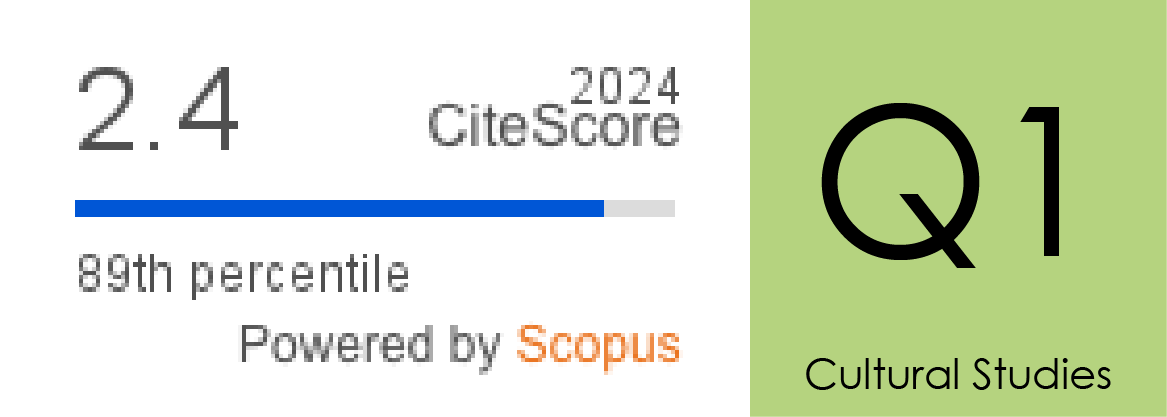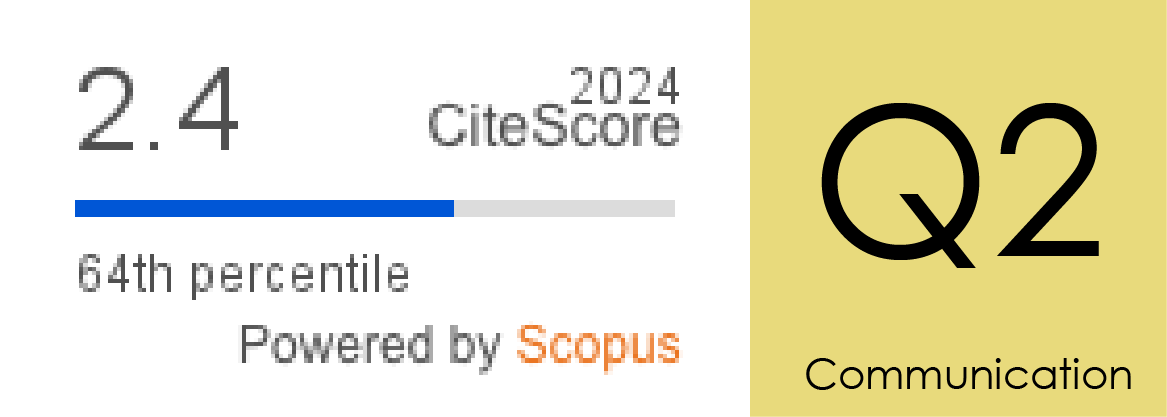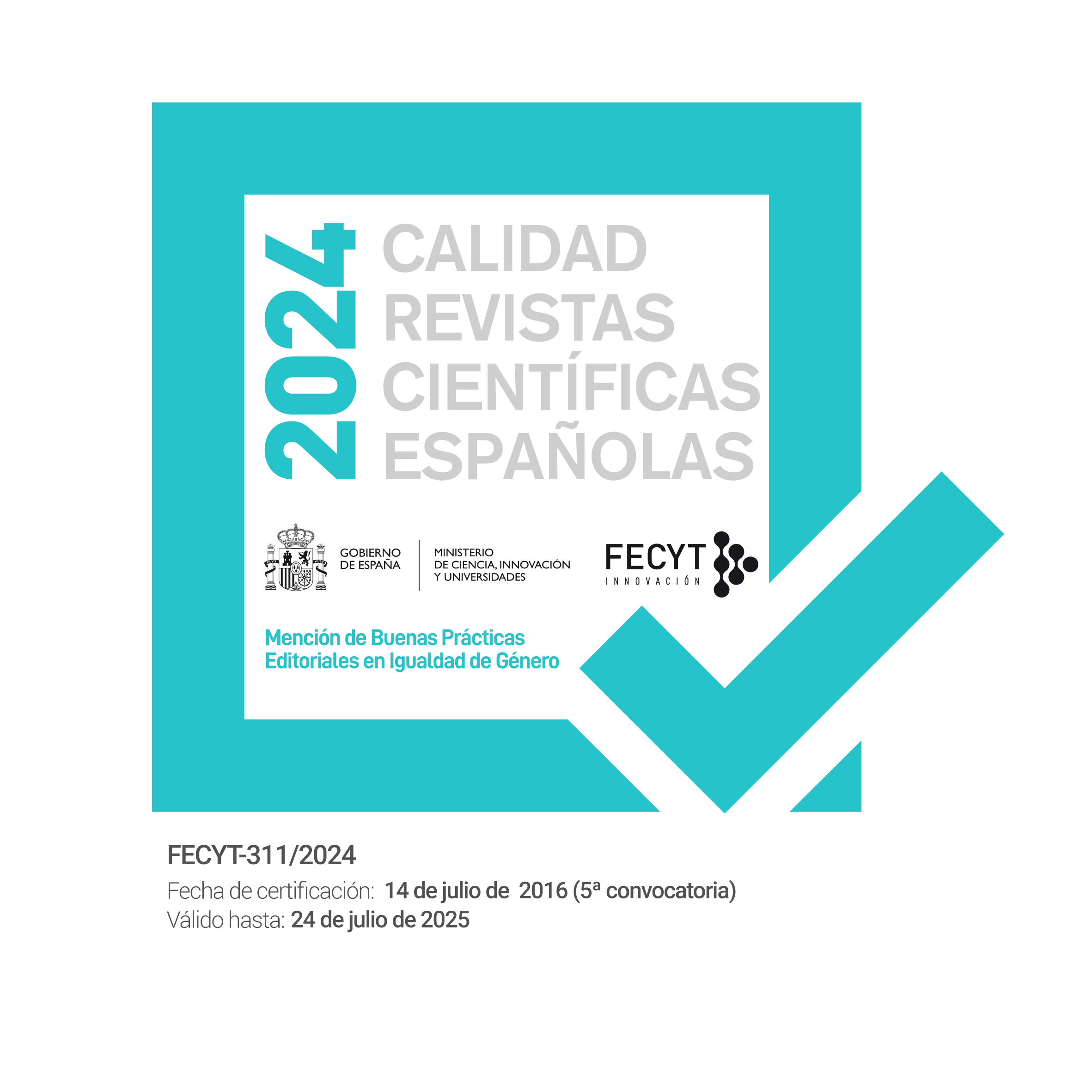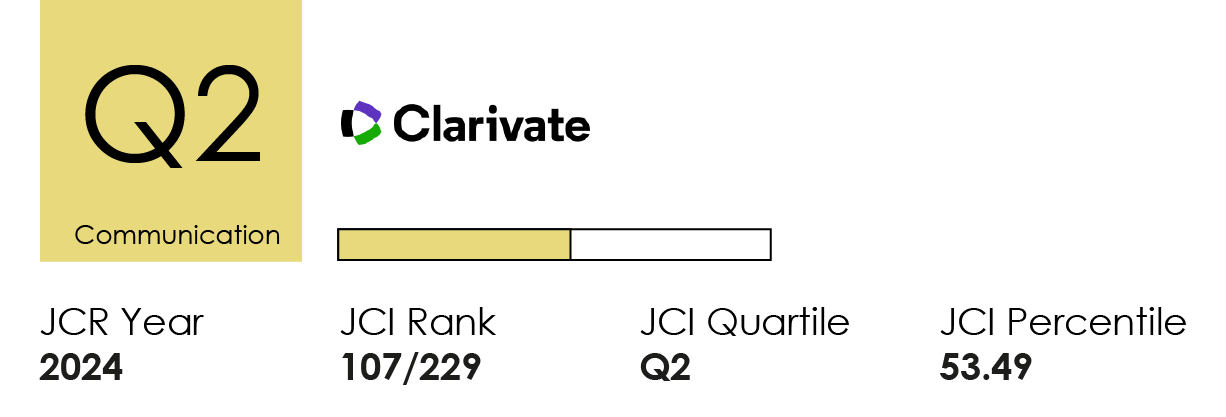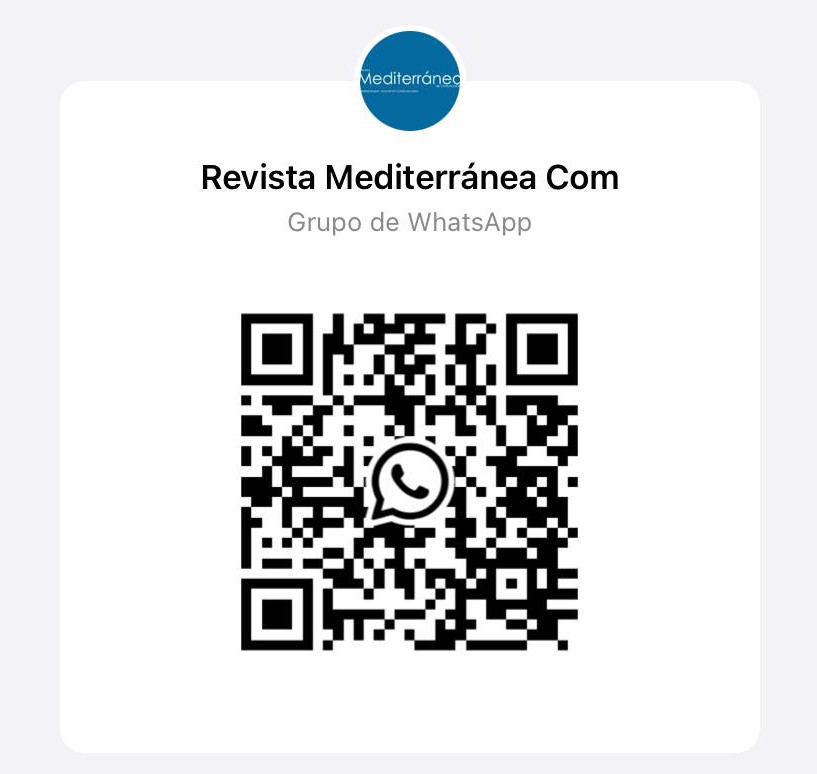Influence of News-Finds-Me Perception on accuracy, factuality and relevance assessment. Case study of news item on climate change
DOI:
https://doi.org/10.14198/MEDCOM2020.11.2.12Palabras clave:
Factuality, News-Finds-Me, News-Sharing, Quality Perception, Relevance, Social MediaResumen
This paper analyses the effect of ‘News-Finds-Me' Perception on the user's assessment of a news item on climate change, both directly and indirectly through news-sharing habits, news-consumption habits, uses and gratifications on social media sites, prior knowledge and attitudes regarding the decision to share said news item. Ninety-six Spanish university students took a survey and were asked to read and rate the quality of a news item on climate change, then to indicate whether they would share that news item on social media. The results show that students with a higher news-finds-me perception tended to rate accuracy and factuality more highly than students with a lower news-finds-me perception. However, relevance was not different between the two groups. Hence, it is concluded that 'News-Finds-Me' Perception lowers the user’s expectations and standards of journalism quality but has no influence on the relevance of the news item. As for sharing intentions, none of the aspects considered in the assessment of the news item had an effect on the decision to share that item.
Financiación
Spanish Ministry of Economy and Competitivity (MINECO/AEI/FEDER)Citas
Anspach, N. M.; Jennings, J. T. & Arceneaux, K. (2019). A little bit of knowledge: Facebook’s News Feed and self-perceptions of knowledge. Research & Politics, 6(1). http://doi.org/gfw43g
Antunovic, D.; Parsons, P. & Cooke, T. R. (2018). ‘Checking’ and googling: Stages of news consumption among young adults. Journalism, 19(5), 632–648. http://doi.org/gdj29s
Barnidge, M. (2015). The role of news in promoting political disagreement on social media. Computers in Human Behavior, 52, 211–218. http://doi.org/f7q8g4
Bene, M. (2017). Go viral on the Facebook! Interactions between candidates and followers on Facebook during the Hungarian general election campaign of 2014. Information, Communication & Society, 20(4), 513–529. http://doi.org/gf3gjz
Bentler, P. (2004). EQS 6 Structural Equations Program Book. Encino: Multivariate Software.
Bobkowski, P. S. (2015). Sharing the News: Effects of Informational Utility and Opinion Leadership on Online News Sharing. Journalism & Mass Communication Quarterly, 92(2), 320–345. http://doi.org/dr9v
Bode, L. (2017). Closing the gap: gender parity in political engagement on social media. Information, Communication & Society, 20(4), 587–603. http://doi.org/gc7mzg
Byrne, B. M. (2009). Structural Equation Modeling with AMOS. Second edition. Structural equation modeling with AMOS Basic concepts applications and programming. Routledge.
Cappella, J. N.; Kim, H. S. & Albarracín, D. (2015). Selection and Transmission Processes for Information in the Emerging Media Environment: Psychological Motives and Message Characteristics. Media Psychology, 18(3), 396–424. http://doi.org/gf8x87
Carlson, M. (2016). Embedded Links, Embedded Meanings. Social media commentary and news sharing as mundane media criticism. Journalism Studies, 17(7), 915–924. http://doi.org/gfj4dj
Chang, J. J.; Kim, S.-H.; Shim, J. C. & Ma, D. H. (2016). Who Is Responsible for Climate Change? Attribution of Responsibility, News Media, and South Koreans’ Perceived Risk of Climate Change. Mass Communication and Society, 19(5), 566–584. http://doi.org/dr9w
Choi, J. & Lee, J. K. (2015). Investigating the effects of news sharing and political interest on social media network heterogeneity. Computers in Human Behavior, 44, 258–266. http://doi.org/f6zwkc
Chyi, H. I. & Yang, M. J. (2009). Is Online News an Inferior Good? Examining the Economic Nature of Online News among Users. Journalism & Mass Communication Quarterly, 86(3), 594–612. http://doi.org/fwwvnj
Dafonte-Gómez, A. (2018). News Media and the Emotional Public Sphere| Audiences as Medium: Motivations and Emotions in News Sharing. International Journal of Communication, 12, 2133–2152. https://bit.ly/3aptCiI
DeVellis, R. F. (2017). Scale development: Theory and applications. Los Angeles: SAGE Publications.
Feezell, J. T. (2018). Agenda Setting through Social Media: The Importance of Incidental News Exposure and Social Filtering in the Digital Era. Political Research Quarterly, 71(2), 482–494. http://doi.org/gdkqw5
Fletcher, R. & Nielsen, R. K. (2018). Are people incidentally exposed to news on social media? A comparative analysis. New Media and Society, 20(7), 2450–2468. http://doi.org/gc7mvk
Gao, Q. & Feng, C. (2016). Branding with social media: User gratifications, usage patterns, and brand message content strategies. Computers in Human Behavior, 63, 868–890. http://doi.org/f82vf3
Gaviria Soto, J. L.; Bienciento López, M. C. & Navarro, E. (2009). Invarianza de la estructura de covarianzas de las medidas de rendimiento académico en estudios longitudinales en la transición de Educación Primaria a Secundaria. Revista de Educación, (348), 153–173. https://bit.ly/2ysZXaI
Gil de Zúñiga, H. & Diehl, T. (2019). News finds me perception and democracy: Effects on political knowledge, political interest, and voting. New media & society, 21(6), 1253-1271. http://doi.org/gfpnmz
Gil De Zúñiga, H.; Huber, B. & Strauß, N. (2018). Social Media and Democracy. El Profesional de La Información, 27(6), 1172–1182. http://doi.org/dr9x
Gil de Zúñiga, H.; Weeks, B. & Ardèvol-Abreu, A. (2017). Effects of the News-Finds-Me Perception in Communication: Social Media Use Implications for News Seeking and Learning About Politics. Journal of Computer-Mediated Communication, 22(3), 105–123. http://doi.org/gbhtc7
Hair, J. F.; Black, W. C.; Babin, B. J. & Anderson, R. E. (2014). Multivariate data analysis. Pearson custom library. Essex: Pearson.
Hart, W.; Albarracín, D.; Eagly, A. H.; Brechan, I.; Lindberg, M. J. & Merrill, L. (2009). Feeling validated versus being correct: a meta-analysis of selective exposure to information. Psychological Bulletin, 135(4), 555–588. http://doi.org/b8x6fj
Hasell, A. & Weeks, B. E. (2016). Partisan Provocation: The Role of Partisan News Use and Emotional Responses in Political Information Sharing in Social Media. Human Communication Research, 42(4), 641–661. http://doi.org/f89ttr
Hyun, K. D. & Kim, J. (2015). Differential and interactive influences on political participation by different types of news activities and political conversation through social media. Computers in Human Behavior, 45, 328–334. http://doi.org/f7tsp9
Jensen Schau, H. & Gilly, M. C. (2003). We Are What We Post? Self-Presentation in Personal Web Space. Journal of Consumer Research, 30(3), 385–404. http://doi.org/dq9hq3
Kalsnes, B. & Larsson, A. O. (2018). Understanding News Sharing Across Social Media. Journalism Studies, 19(11), 1669–1688. http://doi.org/ggcnpv
Karnowski, V.; Kümpel, A. S.; Leonhard, L. & Leiner, D. J. (2017). From incidental news exposure to news engagement. How perceptions of the news post and news usage patterns influence engagement with news articles encountered on Facebook. Computers in Human Behavior, 76, 42–50. http://doi.org/gb4msw
Kaufman, A. R.; Dwyer, L. A.; Land, S. R.; Klein, W. M. P. & Park, E. R. (2018). Smoking-related health beliefs and smoking behavior in the National Lung Screening Trial. Addictive Behaviors, 84, 27–32. http://doi.org/dr92
Khuntia, J.; Sun, H. & Yim, D. (2016). Sharing News Through Social Networks. International Journal on Media Management, 18(1), 59–74. http://doi.org/gcx6cg
Kirk, A. H. P.; Ng, B. S. P.; Lee, A. N.; Ang, B. & Lee, J. H. (2015). Perceptions of Pediatric Critical Care Nurses on the Initiation of a Nursing-Led Feeding Protocol. Journal of Nursing Research, 23(4), 308-312. http://doi.org/dr93
Knobloch-Westerwick, S. & Kleinman, S. B. (2012). Preelection Selective Exposure. Communication Research, 39(2), 170–193. http://doi.org/b67dkb
Kümpel, A. S. (2018). The Issue Takes It All? Digital Journalism, 7(2), 165-186. http://doi.org/ggfkww
Lee, S. K.; Lindsey, N. J. & Kim, K. S. (2017). The effects of news consumption via social media and news information overload on perceptions of journalistic norms and practices. Computers in Human Behavior, 75, 254–263. http://doi.org/gcx6h6
La Vanguardia (19/04/2017). Este río ha desaparecido y los científicos culpan al cambio climático. https://bit.ly/2VgXV6N
Liu, Y.; Rui, J. R. & Cui, X. (2017). Are people willing to share their political opinions on Facebook? Exploring roles of self-presentational concern in spiral of silence. Computers in Human Behavior, 76, 294-302. http://doi.org/gb4msc
Ma, L.; Sian Lee, C. & Hoe-Lian Goh, D. (2014). Understanding news sharing in social media. Online Information Review, 38(5), 598–615. http://doi.org/f6g22x
Matsa, K. E. & Shearer, E. (2018). News Use Across Social Media Platforms 2018. Pew Research Center. https://pewrsr.ch/2yr4sCI
McLeod, J. M. (2000). Media and civic socialization of youth. Journal of Adolescent Health, 27(2), 45–51. http://doi.org/b9xfr7
Metzger, M. J.; Flanagin, A. J.; Eyal, K.; Lemus, D. R. & Mccann, R. M. (2003). Credibility for the 21st Century: Integrating Perspectives on Source, Message, and Media Credibility in the Contemporary Media Environment. Annals of the International Communication Association, 27(1), 293–335. http://doi.org/gf3grq
Mitchell, A.; Simmons, K.; Matsa, K. E. & Silver Laura. (2018). People in poorer countries just as likely to use social media for news as those in wealthier countries. Pew Research Center. https://pewrsr.ch/3acxJhS
Newman, N.; Fletcher, R.; Kalogeropoulos, A.; Levy, D. A. L. & Nielsen, R. K. (2018). Digital News Report. Reuters Institute.
Ngai, E. W. T.; Tao, S. S. C. & Moon, K. K. L. (2015). Social media research: Theories, constructs, and conceptual frameworks. International Journal of Information Management, 35(1), 33-44. http://doi.org/ggb6j6
Noguera-Vivo, J. M. (2018). You get what you give: Sharing as a new radical challenge for journalism. Communication & Society, 31(4), 147–158. https://bit.ly/2VG9frQ
Picone, I.; De Wolf, R. & Robijt, S. (2016). Who Shares What with Whom and Why? Digital Journalism, 4(7), 921–932. http://doi.org/dr94
Segado-Boj, F. (2020). Research on social media and journalism (2003-2017): a bibliometric and content review. Transinformação, 32. http://doi.org/dr95
Segado-Boj, F.; Díaz-Campo, J. & Navarro-Sierra, N. (2020). Emociones y diffusion de noticias sobre el cambio climático en redes sociales. Influencia de hábitos, actitudes previas y usos y gratificaciones en universitarios. Revista Latina de Comunicación Social, 75, 245-269. http://doi.org/ds9k
Segado-Boj, F.; Díaz-Campo, J. & Quevedo-Redondo, R. (2019). Influence of the 'News Finds Me' Perception on News Sharing and News Consumption on Social Media. Communication Today, 10(2), 90-105. https://bit.ly/2RP6HGT
Schweisberger, V.; Billinson, J. & Chock, T. M. (2014). Facebook, the Third-Person Effect, and the Differential Impact Hypothesis. Journal of Computer-Mediated Communication, 19(3), 403–413. http://doi.org/f53tph
Shehata, A. & Strömbäck, J. (2018). Learning Political News from Social Media: Network Media Logic and Current Affairs News Learning in a High-Choice Media Environment. Communication Research. http://doi.org/gddqs3
Shi, J.; Lai, K. K.; Hu, P. & Chen, G. (2017). Understanding and predicting individual retweeting behavior: Receiver perspectives. Applied Soft Computing, 60, 844–857. http://doi.org/gckkjm
Shin, J. & Thorson, K. (2017). Partisan Selective Sharing: The Biased Diffusion of Fact-Checking Messages on Social Media. Journal of Communication, 67(2), 233–255. http://doi.org/f9526m
Singer, J. B. (2014). User-generated visibility: Secondary gatekeeping in a shared media space. New Media & Society, 16(1), 55–73. http://doi.org/gf3gv7
Son, I.; Lee, D. & Kim, Y. (2013). Understanding the Effect of Message Content and User Identity on Information Diffusion in Online Social Networks. PACIS 2013 Proceedings. https://bit.ly/3eumNiV
Spohr, D. (2017). Fake news and ideological polarization. Business Information Review, 34(3), 150–160. http://doi.org/gfkdd9
Stempel, C.; Hargrove, T. & Stempel, G. H. (2007). Media Use, Social Structure, and Belief in 9/11 Conspiracy Theories. Journalism & Mass Communication Quarterly, 84(2), 353–372. http://doi.org/dp43dz
Sundar, S. S. (1999). Exploring Receivers’ Criteria for Perception of Print and Online News. Journalism & Mass Communication Quarterly, 76(2), 373–386. http://doi.org/fbzgbc
Trilling, D.; Tolochko, P. & Burscher, B. (2017). From Newsworthiness to Shareworthiness. How to Predict News Sharing Based on Article Characteristics. Journalism & Mass Communication Quarterly, 94(1), 38–60. http://doi.org/dgzb
Weeks, B. E.; Lane, D. S.; Kim, D. H.; Lee, S. S. & Kwak, N. (2017). Incidental Exposure, Selective Exposure, and Political Information Sharing: Integrating Online Exposure Patterns and Expression on Social Media. Journal of Computer-Mediated Communication, 22(6), 363–379. http://doi.org/gc7m2b
Winter, S.; Metzger, M. J. & Flanagin, A. J. (2016). Selective Use of News Cues: A Multiple-Motive Perspective on Information Selection in Social Media Environments. Journal of Communication, 66(4), 669–693. http://doi.org/f8835w
Descargas
Estadísticas
Publicado
Cómo citar
Número
Sección
Licencia
Derechos de autor 2020 Francisco Segado-Boj, Jesús Díaz-Campo, Enrique Navarro-Asencio, Lorena Remacha-González

Esta obra está bajo una licencia internacional Creative Commons Atribución-CompartirIgual 4.0.
Los autores y autoras que publican en esta revista están de acuerdo con los siguientes términos:
1 Derechos de autor. Los autores y autoras conservan sus derechos de autor, aunque ceden a la revista de forma no exclusiva los derechos de explotación (reproducción, distribución, comunicación pública y transformación) y garantizan a esta el derecho de primera publicación de su trabajo, el cual estará simultáneamente sujeto a la licencia indicada en punto 2. Los autores pueden establecer otros acuerdos adicionales para la distribución no exclusiva de la versión de la obra publicada en la revista, siempre que exista un reconocimiento de su publicación inicial en esta revista.
© Los autores.
2 Licencia. Los trabajos se publican en la revista sujetos a la licencia de Reconocimiento 4.0 Internacional de Creative Commons (CC BY 4.0); los términos se pueden consultar en https://creativecommons.org/licenses/by/4.0/
Esta licencia permite a terceros compartir (copiar y redistribuir el material en cualquier medio o formato) y adaptar (remezclar, transformar y crear a partir del material para cualquier finalidad, incluso comercial), siempre que se reconozca la autoría y la primera publicación en esta revista (Revista Mediterránea de Comunicación (RMC) / Mediterranean Journal of Communication (MJC), Universidad de Alicante, DOI de la obra), se proporcione un enlace a la licencia y se indique si se han realizado cambios en la obra.
3 Política de autoarchivo. Se recomienda a los autores que difundan sus trabajos a través de Internet para favorecer una circulación y difusión más rápidas y, con ello, un posible aumento en la citación y alcance entre la comunidad científica y académica, en las siguientes condiciones:
No se permite a los autores depositar en un repositorio institucional o temático, página web propia, etc., las versiones preprint (versión antes de ser evaluada) o postprint (versión evaluada y aceptada para su publicación) de sus trabajos antes de su publicación, pero sí el artículo final publicado (versión del editor).


